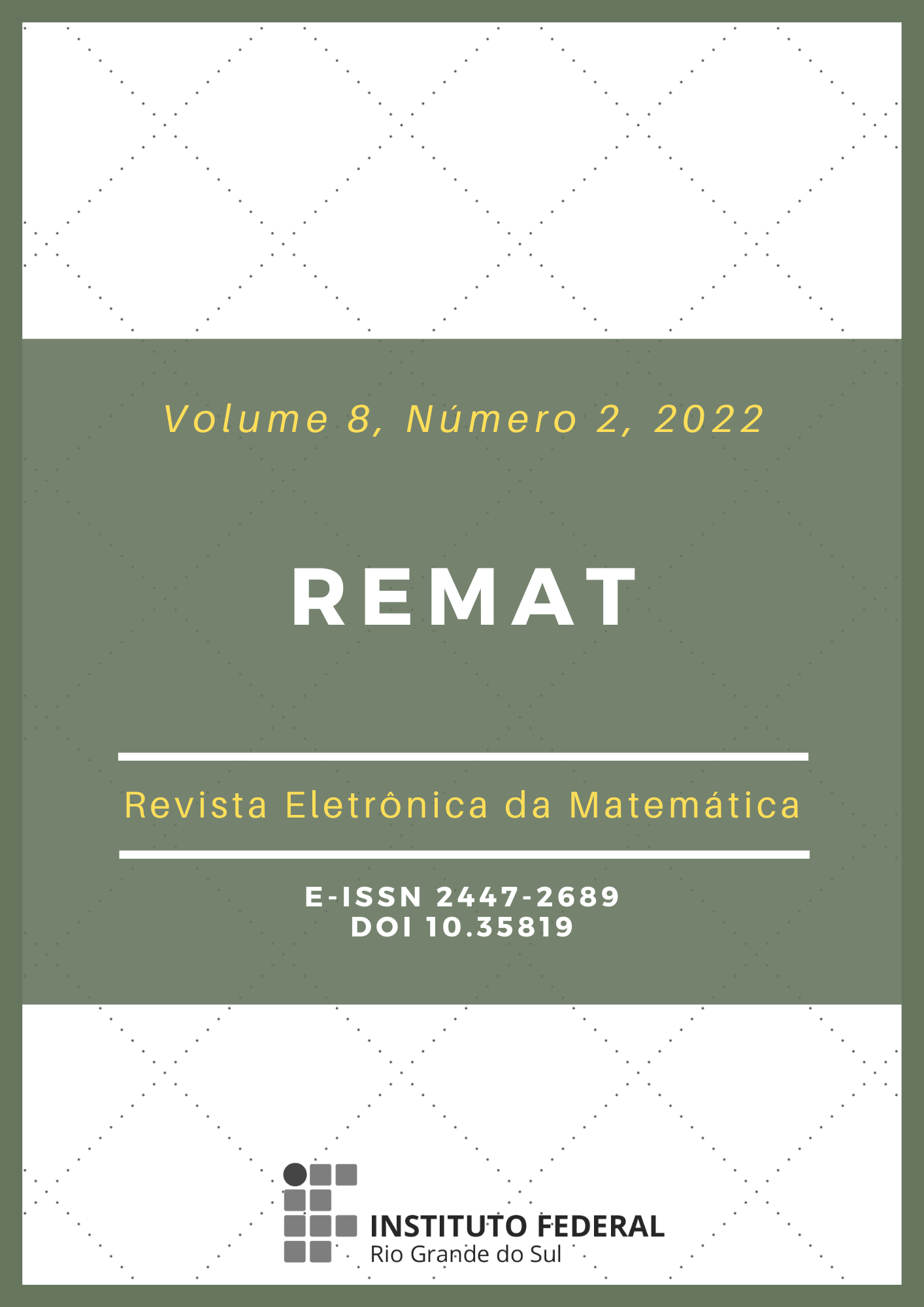A walk through the undulating numbers
DOI:
https://doi.org/10.35819/remat2022v8i2id6043Keywords:
Divisibility, Undulating Numbers, PrimalityAbstract
In these notes we will consider a subset of the natural numbers called undulating numbers. In this numerical subset our interest is centered on properties related to base change, divisibility and primality of undulating numbers. We use the mathematical software Octave to write a code in order to list the prime smoothly undulating numbers smaller than 1013.
Downloads
References
CARVALHO, F. S. ; COSTA, E. A. Escrever o número 111... 111 como produto de dois números. Revista do Professor de Matemática, n. 87, p. 15-19, 2015.
COSTA, E. A. ; COSTA, G. A. Existem números primos na forma 101... 101. Revista do Professor de Matemática, n. 103, p. 21-22, 2021.
COSTA, E. A.; SANTOS, D. C. Algumas propriedades sobre os números Monodígitos e Repunidades. Revista de Matemática, v. 2, p. 47-58, 2022. Disponível em: https://periodicos.ufop.br/rmat/article/view/5521. Acesso em: 8 nov. 2022.
COSTA, E. A. ; SANTOS, D. C. Números Repunidades: algumas propriedades e resolução de problemas. Professor de Matemática Online, v. 8, n. 4, p. 495-503, 2020. DOI: https://doi.org/10.21711/2319023x2020/pmo836.
HEFEZ, Abramo. Aritmética. Coleção PROFMAT, 2. ed. Rio de Janeiro: SBM, 2016.
PICKOVER, Clifford A. Is There a Double Smoothly Undulating Integer? Journal of Recreational Mathematics, v. 22, n. 1, p. 52-53, 1990.
PICKOVER, Clifford A. Keys to Infinity, chapter 20. New York, 1995.
PICKOVER, Clifford A. Wonders of Numbers: Adventures in Mathematics, Mind, and Meaning. Chapter 52 and 88. Oxford University Press, 2003.
RIBENBOIM, Paulo. Números primos: mistérios e recordes. Instituto Nacional de Matemática Pura e Aplicada, Sociedade Brasileira de Matemática, 2001.
ROBINSON, D. F. There are no double smoothly undulating integers in both decimal and binary representation. Journal of Recreational Mathematics, v. 26, n. 2, p. 102-103, 1994.
SHIRRIFF, Ken. Comments on Double Smoothly Undulating Integers. Journal of Recreational Mathematics, v. 26, n. 2, p. 103-104, 1994.
Downloads
Published
Issue
Section
License
Copyright (c) 2022 REMAT: Revista Eletrônica da Matemática

This work is licensed under a Creative Commons Attribution 4.0 International License.
REMAT retains the copyright of published articles, having the right to first publication of the work, mention of first publication in the journal in other published media and distribution of parts or of the work as a whole in order to promote the magazine.
This is an open access journal, which means that all content is available free of charge, at no cost to the user or his institution. Users are permitted to read, download, copy, distribute, print, search or link the full texts of the articles, or use them for any other legal purpose, without requesting prior permission from the magazine or the author. This statement is in accordance with the BOAI definition of open access.













 https://orcid.org/0000-0002-0893-7426
https://orcid.org/0000-0002-0893-7426


















